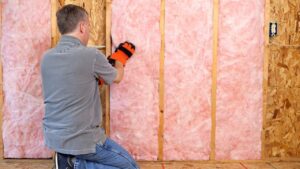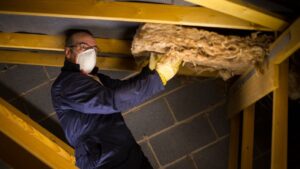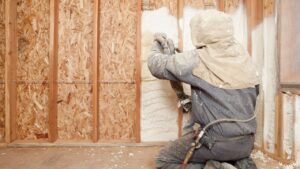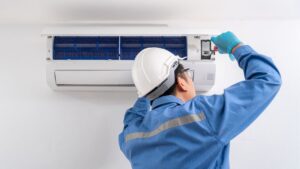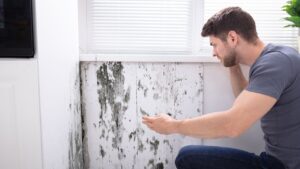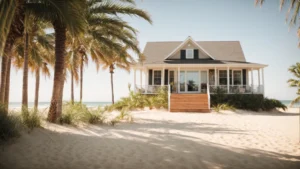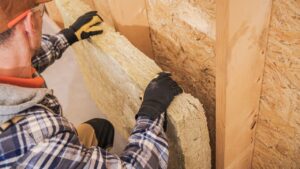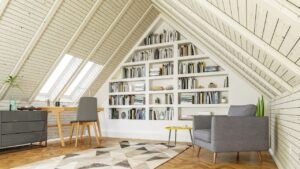Battling brisk winds and bone-chilling temperatures inside your home shouldn’t be a symptom of its vintage charm. Even old houses can be made warm and cozy.
Truth be told, insulating an old house presents unique challenges. However, it presents the promise of cozy living spaces and reduced energy bills. That’s every homeowner’s desire, right?
For homes entrenched in the quaint neighborhoods of Virginia’s Hampton Roads, from the historic streets of Norfolk to the waterfront serenity of Chesapeake, safeguarding the integrity of classic architecture while embracing modern comfort is key. It’s a delicate dance between preserving the past and inviting efficiency.
This blog helps uncover the secrets of how the right building insulation can breathe new life into old walls without disrupting their storied foundations. Keep reading to learn more about Norfolk, VA, installation repair in older homes.
Is It Worth Insulating an Old House?

Insulating an old house can feel like stepping through a minefield. Anytime you have someone working in the aged crawlspaces of your home you run the risk of incurring damage. The reason it’s worth it for proper insulation is increased comfort, increased energy conservation, and a much cozier living space.
The process demands a pinpoint balance between the old and the new – keeping the charm while upgrading the function. Professionals in the field measure success not just in the layers of foam or fiberglass they add but in their deftness at preserving the soul of a home. Careful insulation work can be both a nod to the past and a leap toward modern efficiency.
Investing in old building insulation is not just adding material – it’s valuing heritage and enhancing it with science and sustainability.
| Benefit | Rationale |
|---|---|
| Energy Efficiency | Upgraded insulation leads to less energy consumed and shrinking utility bills. |
| Comfort | Regulated indoor temperature translates to greater comfort year-round. |
| Preservation | Considerate insulation services safeguard the architectural integrity while enhancing the building envelope. |
Issues With Uninsulated Old Houses:

Uninsulated old houses are notorious for energy leaks, sending heat escaping through the roof when it’s cold and inviting the summer swelter indoors. Without proper insulation, these buildings become insatiable whether you are cooling or heating them.
This means that your furnace or air conditioning system works harder to get the job done. The result is huge energy bills and strained systems that need frequent repairs.
Moreover, the absence of proper insulation can lead to damaging moisture problems in historic homes. Moist air seeping into walls and attics condenses, fostering environments where mold and mildew thrive. Over time, this can rot wood and degrade wall materials, threatening the property’s structural integrity.
In older homes, unchecked airflow affects thermal stability and invites dust and allergens that can diminish indoor air quality. This can provoke respiratory issues and discomfort for occupants, significantly undermining the living space’s healthiness.
How to Tell if You Need Insulation
Wondering if your house is yelling for insulation? It’s telling you through chills and high bills. A quick audit by a pro can uncover the truth behind your home’s energy usage and comfort level.
Here are the tips on spotting insulation gaps:
* Lousy weather makes your living room feel like you’re camping.
* Your furnace and air conditioning systems act like they’re running marathons.
* Certain rooms have temper tantrums, swinging from hot to cold.
Don’t wait until your toes turn into ice blocks. Checking the insulation in key areas like the attic, walls, and floors cranks up the coziness and cuts down on cash flying out the window. Seal the deal and insulate.
How to Best Insulate an Old House

Embarking on the journey of insulating an old house requires a fine touch and knowledge of the best materials for the job.
Choosing between batt and rigid insulation, loose fill, or blown-in options can make a world of difference in a home’s energy efficiency and the preservation of its historic charm.
Each thermal insulation type offers unique benefits and challenges, from the robust thermal resistance of batts to the seamless coverage of blown-in solutions.
Homeowners need to navigate these choices wisely to balance modern living standards with respect for the building’s original integrity.
The right insulation choice safeguards old homes against the relentless seasonal elements. It also ensures that the house’s story and character continue to flourish for generations.
Batt and Rigid Insulation
When it comes to insulating an old house, batt and rigid insulation stand out for their effectiveness in specific scenarios:
Batt insulation, typically made of fiberglass or mineral wool, fits snugly between wall studs and joists, making it a go-to for unfinished walls and attic floors.
* Rigid insulation, with its high R-value per inch, is an excellent choice for adding thermal resistance to basement walls or as an extra layer over existing sheathing on exterior walls.
Loose Fill
When targeting tricky spaces or topping off existing batts, loose-fill insulation becomes a hero: it easily snakes into nooks, crannies, and hard-to-reach spots. This method involves materials like cellulose insulation, fiberglass, polyurethane spray foam, or mineral wool that are blown or spread into place, offering a flexible approach to sealing gaps and bolstering energy efficiency.
| Loose Fill Insulation | Advantages |
|---|---|
| Accessibility | Fills irregular spaces and covers attic floors with precision. |
| Versatility | Manufacturer dependent, usually lifetime of the home |
| Energy Conservation | Reduces heat transfer, keeping the home cozy and energy bills low. |
For owners of older homes in the Hampton Roads region, embracing the historic charm doesn’t mean having to endure chilly drafts or inflated energy costs. If your historical haven could use an insulation upgrade, reach out to the folks, who know how to tread lightly on the past while steering you into a more comfortable future.
For those looking to maintain their property’s breathability or worried about contaminants that could complicate the process, Universal Insulation Doctor is ready to assess and tailor solutions for your home’s unique needs. For comprehensive property care, Universal Duct Cleaning ensures that your airways are fresh, contributing to the longevity and cleanliness of your insulated spaces.
Rigid Insulation
Opting for rigid insulation is like choosing sturdy armor for a historical home’s thermal barrier. This insulation type, usually crafted from foam plastics like polystyrene or polyisocyanurate, offers a compact and efficient way to enhance a building’s warmth without expanding the wall profile significantly. Its higher R-value per inch makes it a formidable ally against energy loss, particularly in space-constrained areas.
* Rigid insulation boards provide high insulation ratings, making them ideal for maximizing energy efficiency without requiring much space.
* Due to its dense structure, this insulation type also adds to the home’s structural integrity, often doubling as an air barrier to minimize drafts and energy leakage.
* They can be applied to a variety of surfaces, including basement walls and roofs, catering to the unique demands of preserving and protecting cherished old buildings.
Blown-in Insulation
Blown-in insulation serves as a precision filler for older homes, easily adapting to quirky layouts and existing structures. Applied by professionals, this method injects fibrous materials such as fiberglass, cellulose, polyurethane spray foam, or mineral wool directly into wall cavities and hard-to-reach ceiling and attic spaces. Consequently, it enhances thermal performance and energy efficiency without disturbing vintage properties’ historic framework or aesthetics.
How to Stop Moisture Problems
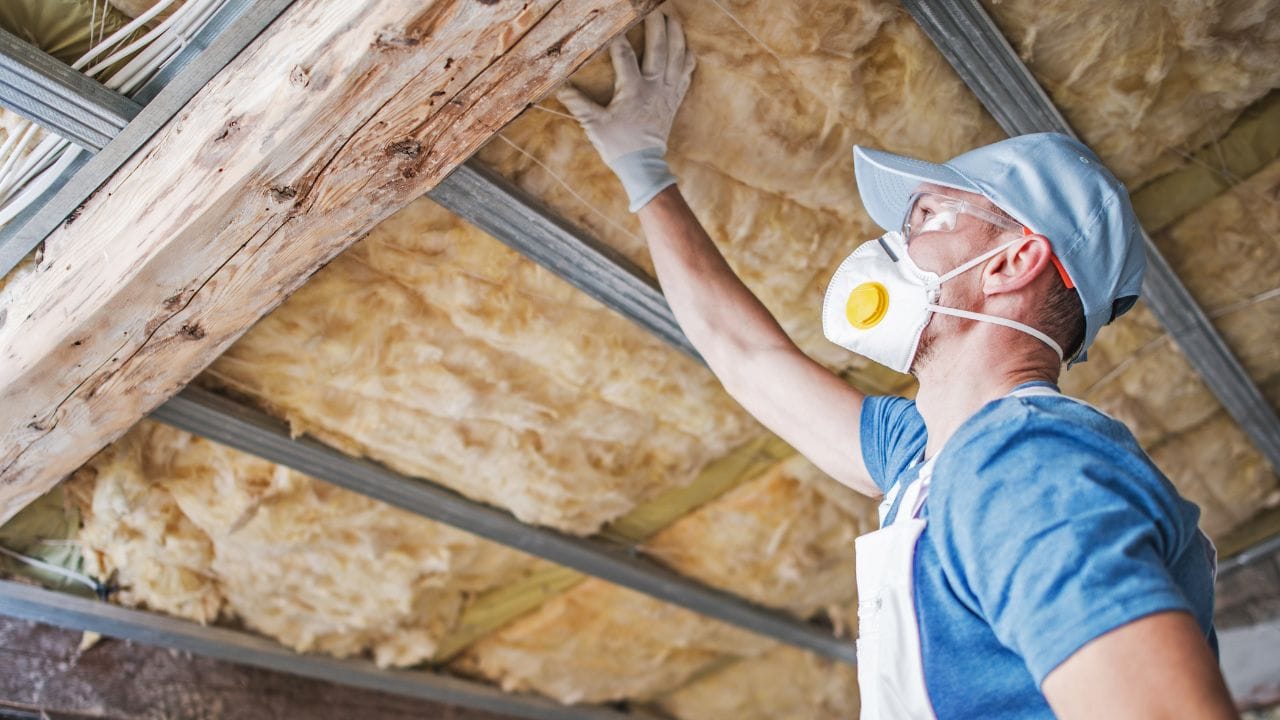
Addressing moisture is paramount when insulating an old house, as trapped moisture can erode the home’s core, leading to mold and structural problems. Specialists identify areas at risk, such as the attic, walls, and basement, and recommend solutions like vapor barriers to combat the moisture menace. These barriers are installed with precision, ensuring that any insulation upgrades protect against condensation and dampness without compromising the property’s well-being.
Insulation experts often employ moisture meters and thermal imaging cameras to pinpoint moisture sources, crafting tailored strategies to seal and insulate effectively. By integrating technology and hands-on experience, they guarantee that each layer of insulation adds warmth and fortifies against moisture infiltration.
Professionals ensure proper ventilation systems accompany new insulation to further safeguard a home. By regulating airflow and reducing condensation risk, they strike a delicate balance between a watertight seal and the breathability essential to an old home’s longevity. This ensures the insulation endeavor is a success for both homeowner and heritage.
What Do You Do with Existing Insulation?

Approaching insulation in an old property looks like a puzzle. Care is crucial, as tearing out the old can invite more renovation problems than it solves. This is where it pays to work with a highly-rated insulation contractor who knows his stuff when it comes to maneuvering around historic homes.
Basic things like floor integrity and the thickness of the walls come more into play when working in an older home.
Evaluating current materials is the first step to delivering insulation perfectly. What’s tucked between the joists and studs? Sometimes, you’ll spot fiberglass; other times, it’s a blast from the past with newspaper and wool.
If the materials are in decent shape, upgrade instead of remove. Picture this scenario:
* An inspection reveals decent attic insulation, but it’s a bit thin on coverage.
* The solution isn’t to rip it all out; that’s like tossing cash into the wind.
* Add layers, boost R-values (that’s insulation talk for resistance to heat flow), and help the homeowner save on utility bills while preserving the past.
Stripping away the old and ushering in the new sounds simple. But, for those who respect history, narrowing down the best tactic without harming the integrity of the house is a skill. Trust, patience, and expertise are key qualities of a team that knows how to insulate an old house right.
Universal Insulation Doctor, The Only Insulation team serving Historic Norfolk Homes
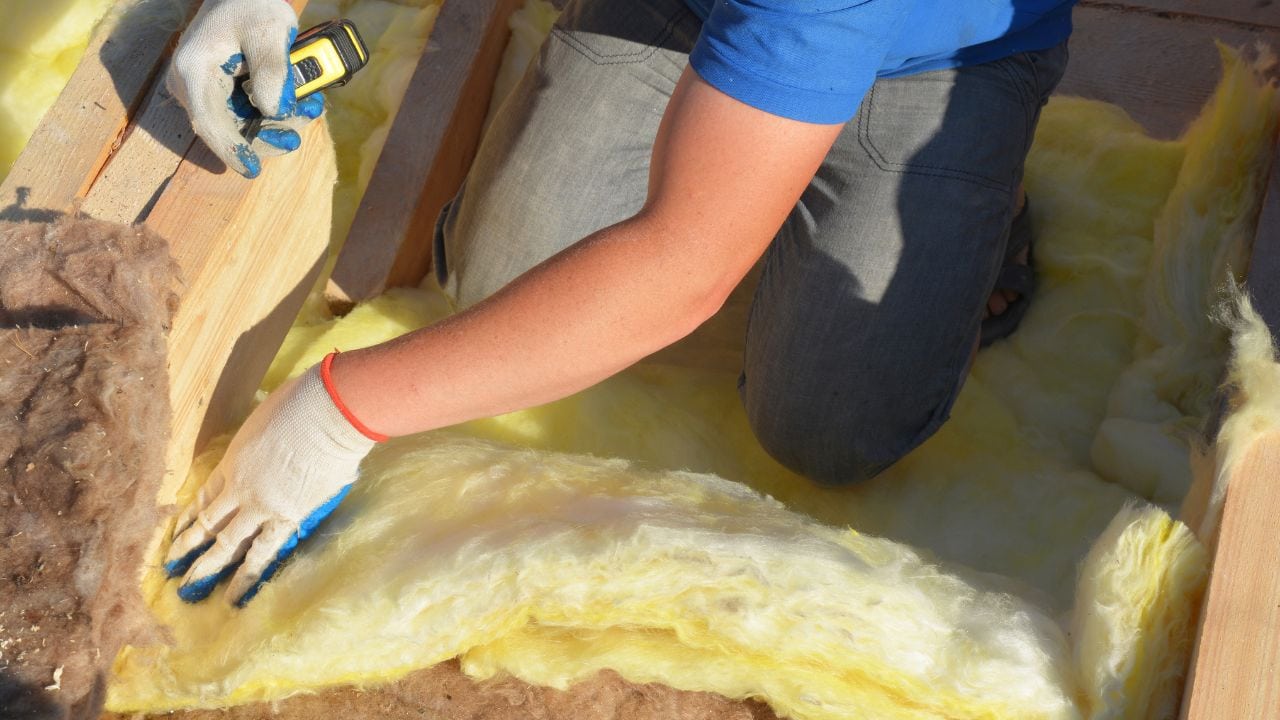
Old houses in the Hampton Roads area, with their intricate woodwork and storied walls, demand special care when it comes to insulation. Universal Insulation Doctor approaches each project with a knowledgeable touch, blending the latest in building science with a reverence for history. They tackle the delicate task of enhancing comfort and energy efficiency without compromising the integrity of these cherished homes.
From Norfolk‘s historic districts to the vintage homes of Portsmouth, insulation must be done meticulously to avoid damage. Stripping away decades or even a century’s worth of character is not an option. Universal Insulation Doctor’s skilled team brings expertise and precision to the task, ensuring that each home’s unique needs are met with tailored solutions.
| Insulation Challenge | Universal Insulation Doctor Solution |
|---|---|
| Preserving original features | Custom-fitting insulation around historical fixtures |
| Improving energy efficiency | Using advanced materials that respect the home's thermal envelope |
| Mitigating moisture risks | Installing vapor barriers with precision to guard against dampness |
Their commitment reaches beyond simply insulating – it’s about extending the life and legacy of these buildings for future generations to enjoy. With Universal Insulation Doctor, homeowners rest easy knowing their insulation upgrade is done right, protecting what’s priceless – their home’s history and future. Even better, their customer service is ready for you at any time for any queries or complaints.
What Determines the Type of Insulation Material Used for an Old House
When it comes to insulating an old house, the type of insulation material you use will depend on several factors. First, you’ll need to consider the construction of the house – what the walls, floors, siding, ceilings, and attic space are made of and how accessible they are. This will determine whether you can use simpler batt or roll insulation or if you’ll need to use more specialized types like rigid foam boards, loose-fill, or spray foam insulation.
Cost is another big factor, as specialty insulation materials tend to be more expensive. You’ll also need to think about effectiveness – the age of the house and deficiencies like air leaks, moisture issues, and heat loss through framing will determine how high your insulation R-values need to be.
Finally, factor in other improvements you want, like noise reduction or fire resistance. Balancing these considerations with an insulation contractor familiar with old homes is key to choosing the right materials that provide maximum insulation with minimal invasion to your historic property. The investment will pay off for decades through greater comfort and energy savings.
The Cost to replace Insulation in an Older Building
Insulating an old house can get pricey, but it’s one of the best investments. Not only will proper insulation make your home more comfortable, but it will also lead to substantial energy savings over time.
For a typical 1,500-square-foot home, expect to pay around $1,000 to $4,450 to add cellulose insulation to attic and wall cavities. Fiberglass batt insulation for hard-to-reach places will add $600 to $2,250. Spray foam insulation costs $2 to $15 per square foot installed. Additional costs may include drywall repair, finishing, and electrical or plumbing modifications, which can range from $2,000 to $7,000.
Consulting an insulation contractor is key, as they can assess your home’s needs and explain your options. Make sure to take advantage of rebates and tax incentives for upgrading insulation in an older home. The bill might sting upfront, but it’s a smart investment that will pay for itself over and over through lower energy bills and improved comfort.
Some of the main factors affecting the cost of insulation in old homes include:
* Type of insulation – Fiberglass batts are the cheapest. Cellulose and mineral wool are moderate-cost options.
* Accessibility – Insulating open attics and crawlspaces is far cheaper than enclosed walls and hard-to-reach spots. Special techniques drive up costs.
* Scope of work – Whole house insulation is pricier than doing select rooms or floors. Adding multiple insulation types costs more.
* Home’s age and condition – Issues like asbestos, lead paint, wiring upgrades, or repairs will increase cost.
* Home’s size – More square footage means more material and labor costs. Multi-story homes cost more.
* Insulation level (R-value) – Bringing insulation up to modern code standards is pricier than minimum upgrades.
* Contractor’s rates – Prices vary among contractors based on experience, materials used, and service area.
* Regional labor costs – Rates will be higher in areas with higher wages and cost of living.
* Special financing – Availability of rebates, tax credits, and incentives can offset costs.
With proper planning, budgeting, and smart contractor selection, insulation projects in older homes can still be affordable. Prioritizing health, safety, and efficiency helps justify the investment.
What Do We Do Before Installing House Insulation?
Several important steps that we take before installing insulation in a home. First, we check for any local building codes in your area hat might be different from the standards in Hapton Roads. The recommended insulation R-values and any vapor barrier requirements don’t often change but when they do we want to be ready. Building codes provide guidance on optimal insulation levels and installation methods for local climate conditions.
Next, we thoroughly seal any gaps that allow unconditioned outside air to penetrate the space being insulated. Carefully look for areas where plumbing, ductwork, wiring, or other openings pass through walls, floors, ceilings, or attics. Sealing these with caulk, foam, or weather stripping dramatically improves insulation effectiveness by eliminating drafts.
Address any moisture issues, ventilate crawl spaces, and install recommended vapor barriers before adding insulation. Taking these preparatory steps ensures the insulation can work efficiently in a sealed, dry environment for maximum energy savings and comfort. The small upfront effort pays dividends for years to come through superior insulation performance.
Choosing the Best Historic Home Insulation Installation Company in Norfolk, VA
When selecting an insulation company, choose one that is experienced, reputable, and uses quality materials. Schedule in-home consultations with at least 3 companies to get quotes and understand your options. Also, ask about their years in business, certifications, products used, and guaranteed R-value.
References are also quite important. Therefore, request references and check ratings with the Better Business Bureau. This helps to determine whether the company does what it says it does.
Make sure the company will provide a warranty for both labor and materials. A reliable insulation firm will help you identify your home’s needs, recommend appropriate products and installation methods, provide fair pricing with no hidden costs, and leave your home clean and disrupted-free. And they are always ready to offer a guarantee for their work.
FAQ
Which Material is Best to Insulate a Boiler?
Several insulating materials are commonly used to insulate boilers and pipes. High-density fiberglass that can be molded into curved pieces or flat sections is one typical boiler insulator. Fiberglass and mineral wool also come in flexible blanket or batt formations that wrap easily around piping and vessels.
Firebrick, pre-cast blocks, or custom cast-in-place refractory materials provide rugged molded insulation around extremely hot sections. The choice depends on heat levels, space constraints, ease of installation, and cost.
What Areas of an Old House Should be Insulated?
Focus on open and accessible areas first like the attic, crawlspaces, and basement. Prioritize exterior walls, ceilings below an uninsulated attic, and exposed ductwork. Insulate any areas with plumbing pipes prone to freezing. Go easy on enclosed wall cavities to avoid damage.

